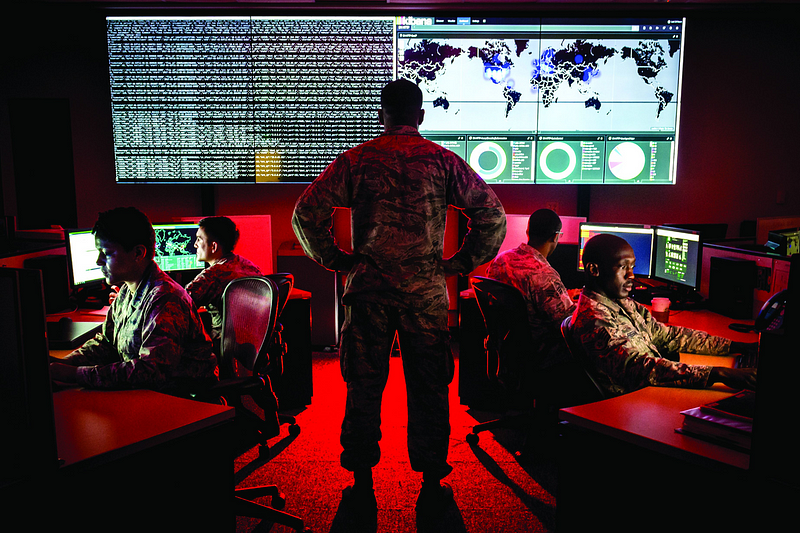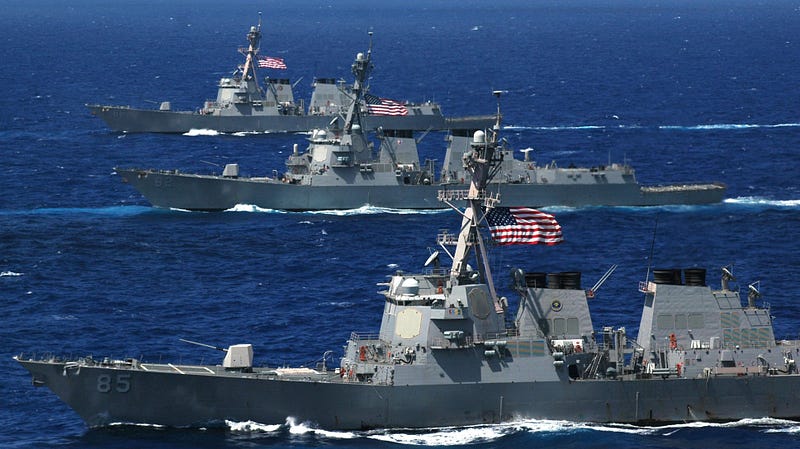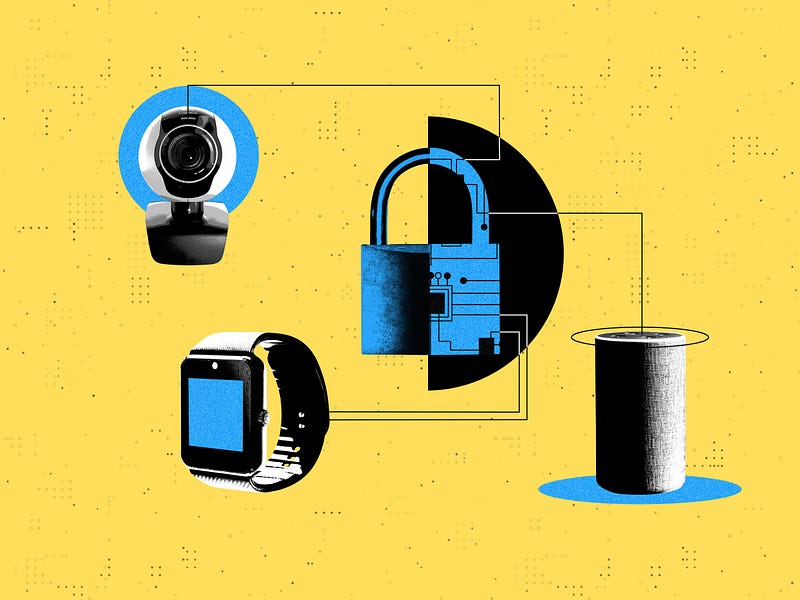The Rise of Cyber Warfare: A New Era of Digital Conflict
Written on
Introduction to Cyber Warfare
In today's world, a few lines of code can unleash chaos on an unprecedented scale.

On February 9, 2021, Sheriff Bob Gualtieri of Pinellas County revealed a harrowing near-miss for the 13,000 residents of Oldsmar. Cybercriminals infiltrated the city’s water supply management system, raising sodium hydroxide levels dangerously high. Fortunately, swift intervention prevented a disaster. Although this incident ended well, it underscores the critical need for enhanced cybersecurity measures.
Historically, cybersecurity threats have existed as long as computers themselves. Yet, for experts in the field, the Oldsmar event serves as a stark reminder of the potential hazards. As technology advances, we witness the rise of digital weapons that can be more lethal and far less costly than conventional armaments.
The Cost of Traditional Warfare
On April 7, 2017, the United States launched 57 Tomahawk cruise missiles at a Syrian airbase linked to a chemical attack on civilians. The financial implications of such military actions are staggering. For instance, a single Block IV Tomahawk missile costs about $1.8 million. Thus, the cost of the missiles used in this attack alone amounted to $106.2 million, not including the expenses of deploying them.

In this instance, the missiles were launched from two Arleigh Burke-class destroyers, each priced at approximately $1.843 billion. This brings the total cost of the missile strike to around $3.788 billion when factoring in the vessels and their operational costs. Including crew and fuel, this figure could easily escalate to $4.088 billion.
A single Boeing RC-135 reconnaissance aircraft, which aids in targeting, costs $330 million for just the airframe. When incorporating all these elements, the total cost to replicate the 2017 missile strike could exceed $5 billion, a staggering sum that illustrates the high costs associated with conventional warfare.
The Economic Advantage of Cyber Warfare
In stark contrast, cyber warfare requires only a laptop and an internet connection to initiate a potentially devastating attack. The digital age has democratized destructive capabilities, allowing not just nations but also criminals to wreak havoc at a fraction of the cost. Experts warn that the destructive potential of digital weapons may exceed even that of nuclear arms.
According to Deloitte, a small-scale cybercriminal operation can operate for as little as $34 per month, with profits potentially reaching $25,000. More sophisticated operations may invest around $3,400 monthly and see returns of over $1 million. The skill set of the attacker plays a significant role in determining these costs and profits.

The foundational infrastructure for launching a cyberattack can cost between $236.5 and $875, depending on the attack type. In comparison, the 2017 missile strike’s returns were negligible, as the Syrian Air Force swiftly relocated their aircraft, mitigating the impact of the assault.
Global Investment in Cyber Warfare
Recognizing the cost-effectiveness and destructive capability of cyber weapons, nations worldwide are investing heavily in their cyber warfare capabilities. This includes not only technologically advanced countries like the United States, China, and Russia but also nations like Iran and North Korea. The accessibility of these tools has made them appealing even to terrorist organizations that once sought traditional weapons.
When Nations Deploy Cyber Weapons
The first known cyber weapon, Stuxnet, allegedly developed by Israel and the U.S., was used against Iran's nuclear program, causing significant damage. Similarly, the Russian interference in the 2016 U.S. elections illustrates how cyber weapons can manipulate public opinion and create social discord.
Welcome to the "Cyber War" - This video explores the emergence and implications of cyber warfare on modern society.
Cyber Warfare Following the War in Ukraine - An examination of how cyber warfare has evolved in the context of geopolitical conflicts.
The NSA’s PRISM program serves as a defining example of global cyber espionage, collecting vast amounts of data from major internet companies. Similarly, China has aggressively pursued cyber espionage, successfully stealing classified information from Western companies, further demonstrating the threat posed by cyber capabilities.
Mitigating Cyber Threats
The most vulnerable aspect of cybersecurity is often human error. An IBM report highlighted that many breaches stem from simple mistakes made by individuals. To combat this, people can take basic precautions, such as using strong, unique passwords and verifying the authenticity of links.

For developers, prioritizing security in the design phase is crucial to preventing vulnerabilities, as seen in the 2016 Mirai botnet attack, which exploited insecure IoT devices.
The Future of Warfare
As cyber weapons become increasingly available, they are set to reshape the battlefield, much like tanks and airplanes did in previous conflicts. The combination of cost-effectiveness and devastating potential makes cyber weapons a formidable aspect of modern warfare.

Ultimately, the expansion of cyber warfare capabilities signals a significant shift in how wars will be fought in the 21st century. Welcome to the new age of conflict: War as a Service.